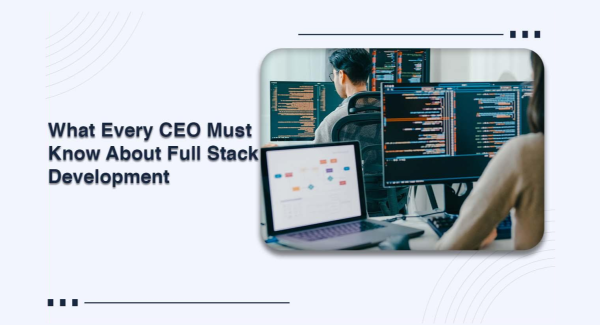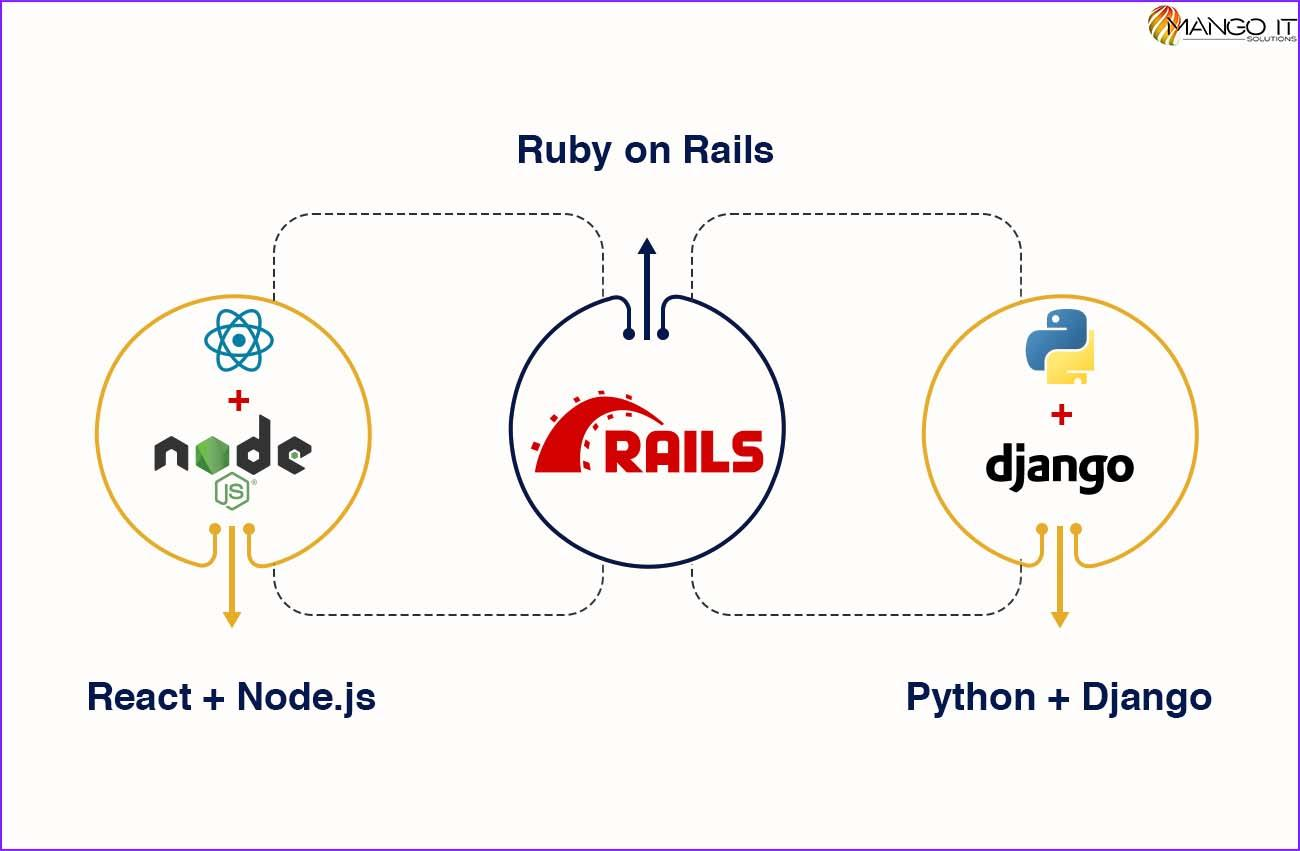
What Every CEO Must Know About Full Stack Development


Technology is not just another support function; it has become essential to core business strategy. It is not only the job of a developer to understand technology in the growing digital economy but also of CEOs.
To stay competitive by making the right technical decisions, CEOs across different strategies can become market leaders.
Full-stack development technology is essential for CEOs to learn and understand. But why should they care about it most?
This guide will provide the answer. We will discuss everything about full-stack development to make this technical subject accessible and relevant.
Full Stack Development: An Overview


Full stack development is a complete spectrum of software or web application development. From front-end development (creating user interface) to back-end development (including server, database, and logic), a full-stack development process is a combination of all technical layers making them unique and versatile.
Key Layers of a Technology Stack:


-
Front-End Development: It creates a user interface using technologies like HTML, CSS, JavaScript, and frameworks like React or Angular.
-
Back-End Development: It manages the database, server configuration, and logic using technical languages like Python, Java, Ruby, and frameworks like Node.js and Django.
-
Database Management: It includes storing, retrieving, and organizing data including MySQL, PostgreSQL, and MongoDB.
-
DevOps: It manages deployment, scaling, and maintaining applications. You can use tools like Docker, Kubernetes, and CI/CD pipelines are often used.
Why Should CEOs Care About Full Stack Development?


This isn’t about CEOs gaining technical knowledge to become a web development expert; it is all about learning how to make informed decisions to achieve business agility, cost efficiency, and innovation potential. Here’s why it matters:
1. Efficiency and Agility
Full-stack developers have complete knowledge and can address issues and complete a task without any handovers.
They are master of faster development processes and more efficient working.
Case in Point: Understanding from a global leader of music streaming brand Spotify, it included a cross-functional team including full stack developers.
This way they were able to rapidly prototype, test, and deploy features, keeping them ahead in a competitive market.
2. Cost-Effectiveness


If you hire a specific skilled developer for different tasks, it will cost you a fortune. Having a full-stack developer on board can be a cost-effective alternative by bringing multiple skills to the table.
Industry Fact: A report by Glassdoor shows that the average salary of a full-stack developer is approximately $110,000 annually in the U.S. It is comparatively cost-effective to hire separate specialists for front-end, back-end, and database management.
3. Alignment with Modern Business Needs

Modern business requires modern techniques to develop advanced apps. Using full-stack can align tasks between the front end, back end, and third-party services to ensure these integrations work smoothly.
4. Strategic Flexibility
Full-stack development provides strategic flexibility to small businesses and startups. It helps them create Minimum Viable Products (MVPs) quickly and improve based on market feedback.
Example: If you are looking to build a brand like Airbnb, understand their technical model first. They had a team of full-stack developers to build the initial prototype. This helped them validate their current model before scaling up.
What Should a CEO Know About Full Stack Development?


It goes beyond technical understanding for CEOs to learn about full-stack development. It also requires understanding the impact of full-stack development. Here are the key considerations:
1. Is It Right for Your Business?


Ask yourself, if your business needs full-stack development services. Understand the needs of your business whether it requires quick prototyping and diversity or a special role for specific skills.
2. Top Technologies in Full Stack Development


Learn the basics of top technologies and frameworks in full-stack development to make informed decisions:
-
Front-End: React, Angular, Vue.js.
-
Back-End: Node.js, Django, Ruby on Rails.
-
Database: MongoDB, MySQL, PostgreSQL.
-
DevOps Tools: Docker, Kubernetes, Jenkins.
3. Competitor Analysis
Analyzing and evaluating competitors is essential to see what works best for them and what stacks competitors are using.
Competitor analysis can help you evaluate potential areas of improvement according to industry trends.
4. Team Synchronization
If your front-end and back-end teams lack synchronization, this misalignment is a sign to hire a full-stack developer. By doing that, you can avoid delays and inefficient development processes.
5. Strategic Choices
Identify of reason for using current technologies over others. Assess these choices and make changes that align with your business goals and scalability needs.
How CEOs Can Leverage Full-Stack Development


1. Build Agile Teams
Hire a cross-functional team that has full-stack developers. These teams are capable of:
-
Quick prototype creation and deployment.
-
Reduce dependency on other teams to increase task speed.
-
Remove miscommunication between front-end and back-end teams.
2. Invest in Upskilling
Start training and upskilling your existing talent pool for full-stack roles. It is best to retain existing employees in a competitive market.
For example, Google provides online resources and internal training programs to emphasize continuous learning to broaden skill sets, including full-stack development.
3. Adopt the Right Tools and Frameworks


Choose technologies that help you achieve your business goals. For example:
-
React + Node.js
-
Ruby on Rails
-
Python + Django
4. Measure ROI Effectively
Measuring efforts and metrics like time-to-market, development cost savings, and user satisfaction is essential to evaluate the benefits of full-stack development on your business.
Challenges CEOs Should Be Aware Of


1. Burnout Risk
Full-stack developers might get a load of responsibilities and stretched thin leading to high burnout if not managed well.
Tip: To avoid it, workload distribution and adequate support is essential.
2. Skill Depth vs. Breadth
Full-stack developers are versatile yet they might lack in-depth expertise as specialists in specific areas. For complex projects, a CEO can opt for a hybrid approach.
Final Thoughts
CEOs in modern times should understand that full-stack development isn’t just a technical concept but has become a strategic decision-maker.
If you successfully embrace this culture, you will be apple achieve greater agility, cost efficiency, and innovation.
Are you ready to include full-stack development in your organization but not able to hire on your own? Well, your struggle ends right here with Mango IT Solutions because we have a team of expert and experienced full-stack developers.
So, let’s start the conversation about success and drive your business forward!





